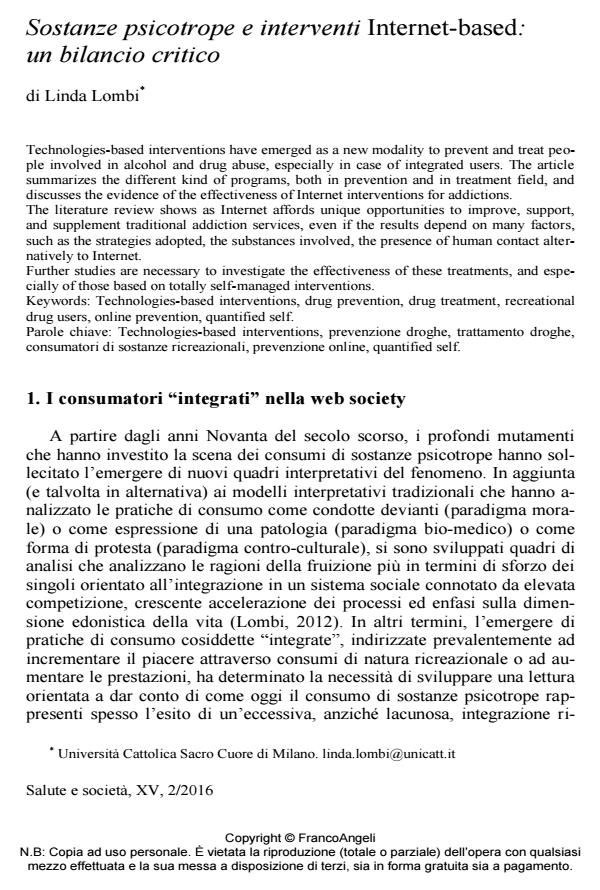Sostanze psicotrope e interventi Internet-based: un bilancio critico
Titolo Rivista SALUTE E SOCIETÀ
Autori/Curatori Linda Lombi
Anno di pubblicazione 2016 Fascicolo 2016/2
Lingua Italiano Numero pagine 17 P. 71-87 Dimensione file 881 KB
DOI 10.3280/SES2016-002006
Il DOI è il codice a barre della proprietà intellettuale: per saperne di più
clicca qui
Qui sotto puoi vedere in anteprima la prima pagina di questo articolo.
Se questo articolo ti interessa, lo puoi acquistare (e scaricare in formato pdf) seguendo le facili indicazioni per acquistare il download credit. Acquista Download Credits per scaricare questo Articolo in formato PDF

FrancoAngeli è membro della Publishers International Linking Association, Inc (PILA)associazione indipendente e non profit per facilitare (attraverso i servizi tecnologici implementati da CrossRef.org) l’accesso degli studiosi ai contenuti digitali nelle pubblicazioni professionali e scientifiche
Technologies-based interventions have emerged as a new modality to prevent and treat people involved in alcohol and drug abuse, especially in case of integrated users. The article summarizes the different kind of programs, both in prevention and in treatment field, and discusses the evidence of the effectiveness of Internet interventions for addictions. The literature review shows as Internet affords unique opportunities to improve, support, and supplement traditional addiction services, even if the results depend on many factors, such as the strategies adopted, the substances involved, the presence of human contact alternatively to Internet. Further studies are necessary to investigate the effectiveness of these treatments, and especially of those based on totally self-managed interventions.
Parole chiave:Technologies-based interventions, prevenzione droghe, trattamento droghe, consumatori di sostanze ricreazionali, prevenzione online, quantified self.
Linda Lombi, Sostanze psicotrope e interventi Internet-based: un bilancio critico in "SALUTE E SOCIETÀ" 2/2016, pp 71-87, DOI: 10.3280/SES2016-002006